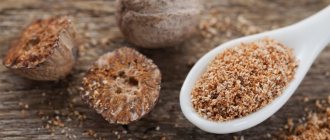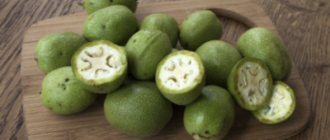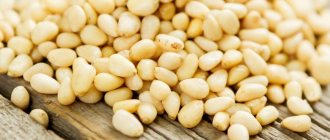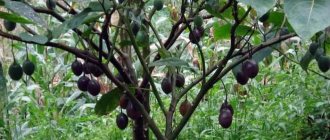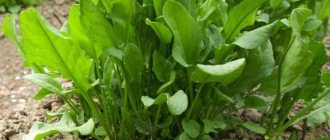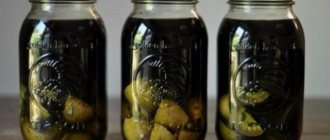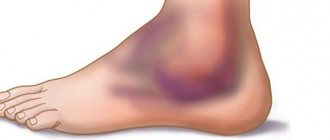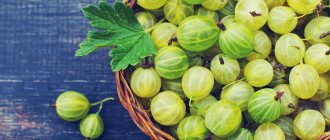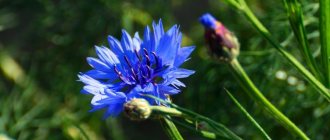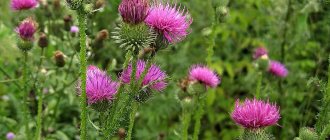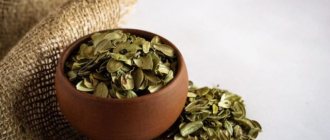What does chestnut look like and where does it grow?
Chestnut trees are representatives of the deciduous type that can grow up to 50 m in height; the bark of the slender trunk has a brown tint. The leaves are lanceolate-shaped and are recognized by small serrations along the edges. The nuts begin to ripen in October or early November, and after full ripening they fall off and crack.
The territories where chestnuts are most often found are the countries of Europe, Asia Minor, and the southern regions of Russia. Chestnuts can coexist with fir, beech or hornbeam.
How is edible chestnut different from horse chestnut?
Chestnut trees belong to the beech genus. Famous varieties include beeches and oaks. This is a small family that is classified according to different characteristics.
Horse chestnut belongs to the horse chestnut family. Edible chestnut and horse chestnut are similar only in name. Horse fruits are not eaten. They are suitable for pet food. The nuts of both representatives are externally similar. They are placed in pluses, which burst when ripe. Trees are distinguished by the structure of the leaves and the quality of flowering:
- horse chestnut blooms profusely, the inflorescences are collected in a kind of vertical candle;
- The edible inflorescences resemble elongated earrings.
Is chestnut growing outdoors edible?
Horse chestnuts grow in natural conditions, in parks and forests. These are large trees with a huge crown and beautiful inflorescences - candles, in which fruits are born in a prickly shell. This species is purely decorative and is not suitable for food. Even when boiled, it retains a bitter taste and, instead of being beneficial, can only harm the body.
However, you can distinguish edible chestnuts from ordinary ones by the appearance of the tree and fruit:
- Edible varieties have more rounded leaves and flat buds. The horse's foliage is carved, with a jagged edge, and the inflorescences are elongated in the form of a pyramid.
- The sown varieties bear fruit, bearing 2–3 fruits in a shell of thick long spines. Horse nuts most often have one nut, hidden under a skin with sharp, sparse thorns.
The fruits themselves of both types are very similar: smooth, rich dark brown in color with a bright gloss. Only a few varieties of chestnut are considered edible: Chinese, crenate, European and Asia Minor.
Chemical composition and calorie content of chestnut
The benefits of edible chestnut nuts depend on the chemical composition of the edible part. It contains:
- ash compounds;
- starch, glucose, sucrose;
- saponins, coumarins, bioflavonoids;
- B vitamins;
- carotene, vitamin K, vitamin C;
- tannins;
- organic acids (citric, lactic, malic).
The group of minerals is represented by compounds of calcium, iron, zinc, and barium.
Raw fruits contain:
- 1.63 g protein;
- 25.44 g fat;
- 17 g carbohydrates.
This composition has an energy value of 196 kcal.
Among the vitamins, the content of vitamin C, PP and vitamin B 1 is increased. In the group of mineral substances, potassium takes precedence, phosphorus is in second place, then magnesium.
The caloric content of edible chestnut fruits depends on the method of preparation and the amount of consumption. In European cuisine, it is customary to prepare pluski by baking or frying them. The number of elements in the chemical composition of edible chestnut is directly dependent on the ripening conditions. Dry periods contribute to the formation of nuts, which have a reduced amount of water and an increased content of dietary fiber and sugar.
What are the benefits of edible chestnuts?
Edible chestnut fruits are used for cooking in the north and east of Europe; the population of other European countries also appreciates the benefits they bring.
A fashionable trend is gaining momentum, which includes the inclusion of edible chestnuts in healthy diets.
Due to their chemical composition, breadfruit nuts have a number of beneficial properties that affect the human body:
- dietary fiber content helps improve digestion;
- pectins tend to reduce the acidity of gastric juice (this is useful for people suffering from pancreatic diseases);
- amino acids, flavonoids, minerals and vitamins impart the ability to have a bactericidal effect (these mechanisms help inhibit the activity of fungal bacteria and reduce the risk of viral development);
- vitamins, unsaturated fatty acids have a beneficial effect on intestinal motility;
- the combination of minerals and ascorbic acid makes the product useful for people with diseases affecting the condition of the blood vessels of the brain;
- Eating nuts reduces the risk of developing atherosclerotic plaques and improves blood flow.
The beneficial properties of the tree are also used for preparing external remedies: decoction lotions are suitable for healing ulcers, relieving swelling in thrombophlebitis or varicose veins.
The content of various microelements makes the product useful as a general strengthening and tonic.
The increased vitamin C content increases the health benefits of consuming edible chestnuts. They are recommended for use for colds, as well as inflammatory conditions of the upper respiratory tract.
For men
The increased content of fiber and protein in edible seeds, as well as the presence of pectin substances, make them useful for consumption by men.
Saponins influence the synthesis of male hormones, which helps normalize the functioning of the reproductive system.
Edible nuts are useful for men after 40 years of age as a safe means to improve potency. Tinctures of the tree's fruits are used in complex therapy of prostate adenoma.
For women
The beneficial properties of edible nuts for women are:
- relief of conditions during menstrual cycles;
- strengthening blood vessels and preventing the development of varicose veins;
- normalization of blood flow;
- reducing the risk of developing cancer.
For the elderly
The medicinal properties of edible chestnut are useful for older people; their use is justified in cases where it is necessary:
- prevent the formation of atherosclerotic plaques and narrowing of cerebral vessels;
- saturate the brain with oxygen.
These mechanisms of action are the prevention of strokes and heart attacks. Similar beneficial effects can be achieved through the systematic consumption of chestnut nuts. The benefits increase if chestnuts are chosen correctly and cooked well.
For children
In Europe, chestnut is often called an “energy bar.” Despite the numerous beneficial properties of edible chestnut, it has contraindications when used in baby food. It is not recommended to be given to children unless they are 5-6 years old.
The digestive system of children is not fully formed, so fruits can become heavy, poorly digestible food for it. To eliminate the risk of harm to the child’s body, you should consult with your pediatrician about eating nuts.
One of the conditions for use is proper preparation and gradual introduction into the children's diet.
For weight loss
The characteristics of chestnut fruits are used when planning dietary programs. The high content of carbohydrates gives them the ability to quickly saturate the body and replenish reserves of proteins, carbohydrates and nutrients.
Useful and medicinal properties of horse chestnut
The most famous and in demand on the European continent are two types of chestnut - horse and seed (noble).
Horse chestnut grows almost throughout Russia and is well known to most of its residents. In spring, horse chestnut is covered with numerous flowers - delicate white and pink inflorescences in the form of candles. And in the fall, the soil under the tree is covered with its fruits - round, shiny brown. And although they are inedible, they have great healing power.
The noble chestnut loves a mild subtropical climate, so it is found in southern latitudes. A mature chestnut tree looks no less picturesque than the crown of a horse chestnut tree. And most importantly, its fruits - nuts - are edible and have a pronounced pleasant taste.
However, in terms of healing properties, chestnut is inferior to horse chestnut.
Chemical composition
Official medicine recognizes the medicinal properties of all parts of horse chestnut - flowers, fruits, leaves and even bark, and is used to produce medicines.
The special value of the plant lies in its composition:
- in fruits and bark: phylloquinone, sugars, fatty oils, as well as active compounds of the glycoside group saponins (10%) - esculin and escin, which reduce blood viscosity, have an antithrombic effect, and reduce capillary permeability;
- in fruits: glycoside group flavonoids - quercitrin, isoquercitrin, quercetin and kaempferol, fraxin, fatty oils, starch, proteins;
- in fruits: vitamins B, C, microelements - iron, potassium, zinc, magnesium, phosphorus, calcium, tannins;
- in the leaves - vitamin K, carotenoids, pectins, as well as rutin, selenium, spireoside, astragalin, starch. It is characteristic that the biochemical composition of the leaves does not change during the warm season;
- in flowers - rutin, flavonoids, mucilage, pectins.
The healing potential of the substances that make up horse chestnut determines its pharmacological properties. Their use is not only appropriate, but also necessary in the treatment of most pathologies of the circulatory system.
Benefits for men and women
By using the healing properties of chestnut in the preparation of medicines and potions, you can get rid of many diseases against which traditional medicines are powerless.
The medicinal properties of the plant are due to the action of biologically active substances:
- tanning compounds have a disinfecting effect, relieve inflammation and stimulate blood circulation;
- saponins regulate water-salt balance, promote the synthesis of hormones, prevent the development of vascular atherosclerosis and strengthen venous walls;
- rutin increases the elasticity of blood vessels, normalizes blood pressure, takes part in the functioning of the adrenal glands, and increases the functionality of the gallbladder;
- carotenoids support the functionality of the cardiovascular system and normalize cholesterol levels;
- flavonoids increase the strength of vascular walls and have a choleretic effect.
Thanks to the rich composition of fruits and bark, chestnut is indispensable in restoring men's health. Tinctures based on the plant are taken for prostate adenoma, decoctions from crushed fruit peels help with decreased potency and sexual desire, and baths with the addition of chestnut decoctions reduce inflammatory processes.
Women use horse chestnut-based products for:
- getting rid of cellulite;
- improved digestion;
- eliminating swelling;
- treatment of gynecological diseases caused by blood stagnation in the pelvis;
- therapeutic effects for mastitis;
- combating varicose veins and thrombophlebitis;
- stopping uterine bleeding;
- cleansing the body of toxins.
The use of chestnut fruits is indicated for hemorrhoids, metabolic disorders in the body, arthritis, heart disease, bronchitis, rheumatism and radiculitis.
Since horse chestnut is considered inedible, medications based on it must be strictly dosed.
The use of chestnuts in folk medicine
The properties of edible chestnut are widely used in traditional medicine recipes: it is used to prepare tinctures, external remedies, added to food, and independent dishes are prepared based on it.
For colds, swelling and inflammation of the larynx, decoctions of the fruit are used, which tend to increase mucus production and relieve spasms that provoke coughing.
Decoction and baked fruits are used as a remedy:
- regulation of capillary strengthening;
- control the level of bad cholesterol;
- activation of metabolic processes.
Culinary use and taste
In general, we can distinguish 8 areas of treatment where horse chestnut can be used:
- anti-inflammatory effect;
- strengthens blood vessels;
- increases muscle tone;
- treatment of nasopharynx;
- treatment of hemorrhoids;
- climatic bleeding;
- anti-burn effect;
- strengthening the immune system and giving strength.
Chestnut is useful not only for its fruit. Very often, various decoctions are made from both the bark of the tree and the flowers of the fruit itself. This means that as long as the chestnut grows, blooms or bears fruit, it can always be useful.
Surprisingly, it is also an excellent antiseptic, and therefore has an anti-inflammatory effect.
Most often, the use of horse chestnut is observed in medicine as a useful element for treating problems with blood vessels and joints.
https://www.youtube.com/watch?v=FyIa2ST4HNE
It has strengthening properties, you will feel an improvement in your condition immediately after completing the course of treatment.
In addition, it improves muscle tone, eliminates sagging skin and improves the overall well-being of the body. Of course, understanding all this comes with age, but no one bothers you to take it as a preventive measure.
If we talk about the specificity of chestnut among other medicinal plants, chestnut is largely the best remedy for treating nasopharynx, burns, and has a good tonic effect on the entire body.
The properties of edible chestnut are widely used in traditional medicine recipes: it is used to prepare tinctures, external remedies, added to food, and independent dishes are prepared based on it.
For colds, swelling and inflammation of the larynx, decoctions of the fruit are used, which tend to increase mucus production and relieve spasms that provoke coughing.
Decoction and baked fruits are used as a remedy:
- regulation of capillary strengthening;
- control the level of bad cholesterol;
- activation of metabolic processes.
Medicines from chestnut are also used in folk medicine.
Such medicines can be easily prepared at home.
First, you need to collect the bark, leaves, flowers and fruits of horse chestnut on time and correctly.
- The bark should be collected in the spring, cutting off layers of bark from young shoots. The collected bark should be cut into small pieces and dried.
- Flowers are collected at the height of flowering, dried in the sun during the day, and then dried in the shade.
- The leaves are also best collected in the spring, when they are young and juicy.
- The fruits are collected after they ripen, somewhere in mid-autumn.
All raw materials must be collected away from the city limits and main roads. If it is not possible to travel far outside the city, collection can be carried out in parks remote from the bustle of the city and enterprises.
For inflamed wounds and trophic ulcers, compresses are made from an alcoholic extract of horse chestnut fruits.
To prepare it, take 5 tablespoons of crushed fruits or brown peel, add vodka and let it brew for seven days. The extract can also be taken orally, 30 drops after each meal.
To treat arthritis and joint pain, compresses are made from whole chestnut fruits infused with vodka.
To prepare, you need to take 10 chestnut fruits, pour half a liter of vodka over them, let them brew in a cold place for 10 days. This infusion is good for rubbing joints and making compresses.
For varicose veins:
- Squeeze the juice from fresh chestnut flowers. It should be taken 20-30 drops, diluted with a small amount of water, three times a day before meals.
- Grind several peeled chestnut fruits, about 50 grams, and place them in a dark glass container.
You can use a beer bottle as a container. Pour the resulting powder with 250 grams of alcohol and leave in a cool place for 10 days. The infusion must be stirred periodically. The finished extract should be filtered and taken orally, 10 drops 3 times a day, half an hour before meals. Treatment with infusion should not last more than a month. If further treatment is necessary, you can reduce the dosage by half or give preference to compresses from the same infusion.
For diseases of the gastrointestinal tract and gastritis, a decoction of chestnut bark is used. For the decoction, pour half a glass of the raw material into two glasses of water and bring to a boil. Before use, strain the decoction and drink in four doses.
For hemorrhoids, take baths with the addition of a decoction of horse chestnut bark; the decoction is also used for atherosclerosis, migraines, heart disease and bronchitis.
Despite the fact that horse chestnut and edible chestnut are completely different in their properties and areas of application, they both have occupied an important place in human life, delighting us with delicious dishes and helping to maintain health for many years.
How to use chestnut in cosmetology
The female part of the Russian population and residents of European countries use edible nuts in home cosmetology.
The benefits of using edible chestnut for preparing external cosmetics are hard to miss. It is recommended to add its pharmaceutical extracts or flour to the product.
Extracts of edible fruits are added to creams and face masks, hair shampoos, hand balms, bath foams, and anti-cellulite products.
The properties of edible chestnut to relieve inflammation and irritation of the skin, improve color, cleanse, and rejuvenate are used in face masks.
To relieve inflammation, reduce the fragility of capillary vessels and normalize the functioning of the sebaceous glands, prepare a chestnut-honey mask that is suitable for all skin types.
Shampoos containing healthy edible chestnut restore the structure of the hair, making it strong and strong.
With the help of body lotions, the effect of enhancing microcirculation in the skin, toning the skin, smoothing, lifting, and getting rid of the “orange peel” is obtained.
Bath foams have good relaxing properties and the ability to soften the skin.
Tannins have properties that are indispensable in cosmetology. Compounds of substances, flavonoids and essential oils in a complex:
- saturate the skin with oxygen;
- contribute to the restoration of the upper layer of the epidermis;
- act as a filler: fill facial wrinkles and smooth them out.
Due to the property of edible chestnut to neutralize the damage of ultraviolet rays, it is added to tanning products.
Using tree oil, you can take care of aging and dry skin. And the ability of foot cream with edible chestnut to relieve swelling and fatigue is used in the prevention of varicose veins.
Stagnation of blood harms the body; this mechanism provokes the formation of cellulite and reduces the overall tone of the skin. Peeling from edible chestnut prevents stagnation of blood flow and activates hematopoietic processes.
Horse chestnut application in cosmetology
The rich content of bioflavonoids and glycosides in cosmetic products for facial and body skin care has a tonic, rejuvenating and moisturizing effect. If you use the decoction for washing at least every other day, it will improve your complexion, smooth out fine wrinkles, and change the tone of your facial skin.
Through experiments, it has been proven that cosmetics based on chestnut extract help protect the skin from the oxidative effects of free radicals, slow down the aging process of the skin, strengthen the walls of the skin capillaries, normalize microcirculation in the capillaries and vessels of the face, and soothe the skin.
In addition, shampoos based on chestnut extract affect the condition of the hair follicles and dermis of the scalp, helping to strengthen hair and prevent hair loss.
Horse chestnut has UV protection and a moisturizing effect and is therefore used as a component in tanning creams. There are many anti-cellulite body wraps available as it improves blood circulation.
Some foot creams contain a plant extract, which is necessary to combat varicose veins and relieve swelling.
It is important to remember that cosmetics containing chestnut should be stored in tightly closed containers and in a cool place.
Edible chestnut in cooking
Properly prepared chestnuts have not only beneficial properties, but also bright taste. The chestnut tree has long been called “bread tree”. This is due to the fact that the powder of ground nuts was used for baking bread. Modern chefs use the nut as an ingredient for salads, soups, and serve it as a side dish combined with vegetables. This addition enriches the dish and increases its benefits.
We recommend reading: What are the benefits of yeast-free bread and how to bake it
Roasted chestnuts
To roast chestnuts yourself, you need to follow some rules. The peculiarity of the nuts is that the plyus, or the shell that covers the nuts, becomes dense and taut after ripening. If you don't cut it, it will start to burst and bounce off.
Immediately before roasting, chestnuts are washed, the shell is pierced or slightly cut. Fry over low heat for about 20 minutes, readiness is determined by cracking of the cover and softness of the contents.
Information! If you overcook nuts, the pulp becomes hard and tasteless.
After frying, the peel is removed and the pulp is pureed or added to other dishes.
Chestnut soup
Chestnut soup is a French dish that is prepared with the addition of a variety of ingredients. The classic recipe involves the use of nuts and meat broth.
Boiled chestnuts are peeled, poured into a pan with meat broth, and boiled for half an hour. At the last stage, vegetables sautéed in butter are added and served with fried bread. Many people prefer to blend the contents with a blender and serve it as a puree soup. The classic recipe does not exclude serving with pieces of boiled vegetables and chestnut pulp.
Recommended reading: Benefits of boiled beets for the body
How do you usually eat chestnuts?
Chestnuts are usually eaten roasted or boiled, but they can also be eaten raw.
- In order to fry such nuts, you need to pierce or cut their skin, this can be done with a knife or a fork.
- The cuts must be made, otherwise, when frying, the skin will begin to crack severely, and the chestnuts will fly apart like popcorn.
- After this, the prepared chestnuts are placed in a frying pan or on a roasting pan and cooked for about half an hour.
- The chestnuts need to be stirred during cooking.
- After roasting, the chestnuts become soft and the skins are easily removed.
- They need to be eaten warm; peeling cooled fruits is sometimes very difficult.
Harm of chestnuts and contraindications
One of the nuances of using chestnut fruits for food can be the wrong choice. Horse chestnut fruits are poisonous and unsuitable for consumption. In some cases, they are confused and attempts are made to prepare a delicious dish from horse chestnut.
Eating nuts may be harmful to people who have allergic reactions to food. Chestnut fruits are a specific product, so they can cause non-standard reactions in the body.
They are not recommended for people suffering from kidney failure. Taking may harm the genitourinary system.
Nuts are also contraindicated for people who suffer from diabetes. The carbohydrate content can be harmful and provoke an exacerbation of diabetic conditions.
Horse chestnut medicinal uses
After studying the healing properties of chestnut, it becomes clear that its use in medicine has no analogues. Each part of the plant contains a whole range of useful substances, and therefore it is widely used in official medicine and pharmaceuticals.
Therapy using horse chestnut preparations for diseases of increased capillary fragility, inflammation of the veins, varicose veins, and thrombophlebitis is very effective.
The presence of biologically active substances in fruits, leaves and inflorescences allows preparations based on horse chestnut to be used in the treatment of neuralgia, since the plant has a calming, hypnotic effect on the body.
The drug promotes tissue nutrition by improving blood circulation in the vessels. A chestnut-based product is used in the treatment of thrombosis that occurs in the postoperative period, inflammation, and thromboembolism.
Pharmacological agents that include this plant are effective for diseases of the gastrointestinal tract. They eliminate the symptoms of diarrhea and normalize the processes of bile secretion from the gallbladder. Preparations based on chestnut are used for sore throat, bronchial disease and tonsillitis.
It was experimentally found that the most effective preparation is an alcoholic extract of seeds, which, at the same time, also has the least toxicity. One of the main effects on the body is the glycoside escin, with a pronounced venotropic, anti-inflammatory and anti-edematous effect.
Pharmaceutical preparations for oral use include:
- Aqueous-alcoholic extract of Aescusan;
- Tablet drug Esflazid;
- Anavenol - available in the form of drops or tablets.
For external use, creams and gels containing horse chestnut extract are used: Venitan cream and Dr. Theis, Essaven gels.
How to select and store chestnuts
To minimize the risk of harm to the body and increase the benefits of consumption, it is necessary to choose chestnuts correctly.
The period when nuts fully ripen is from September to February. External signs by which edible chestnuts that can be beneficial should be distinguished:
- hard smooth shell;
- absence of stains, damage, plaque;
- glossy brown shine;
- feeling of heaviness;
- round shape;
- absence of a green layer between the core and shell.
Storage is complicated by the fact that the fruits tend to spoil quickly. If storage rules are violated, such nuts can be harmful.
In order to prevent the formation of unhealthy compounds in the composition, they are stored at a temperature not exceeding +20 °C in a dry, dark place for about 5 days.
Store in the refrigerator for about 2 weeks, wrapped in food paper to avoid mold. It is also recommended to store the fruits frozen.
Advice! If freezing rules are followed, they do not lose their properties and can be beneficial when added to food in the same way as a fresh product.
